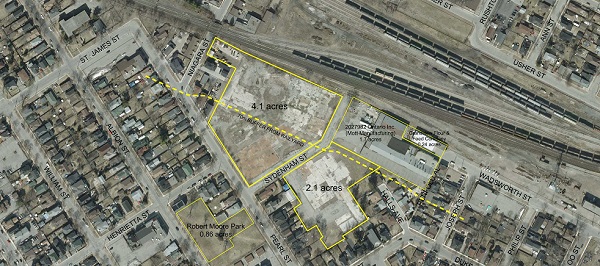As available greenfield sites suitable for solar are used or developed in other ways, renewable energy companies are looking to brownfields as alternative locations for development. And it’s not a surprising trend, said Jonathan Wells, a partner at Alston & Bird, an international law firm that specializes in environment, land use and natural resources, among other services.
“Brownfields are often larger tracks of land with favorable zoning, and in a lot of cases they’re located near interconnect facilities,” Wells said. There are financial incentives, too. “Some states have brownfield-specific programs, so if you spend money cleaning up the site you can take that money as a credit for future years’ tax bills.”
Much of Wells’ work has been in Georgia, where Alston & Bird has a robust brownfield practice that helps companies decide whether to buy properties for redevelopment. Solar Power World talked with Wells to outline three key points developers should consider when looking to build on brownfield properties.
1) Take sufficient pre-closing soil samples to understand the cleanup challenge and forecast costs.
As a first step, it’s vital to take soil samples from across the property to know what conditions are present. Knowing the levels of different contaminants will indicate how much cleanup may be required, letting you potentially forecast your development cost and build that figure into the purchase price.
Under a best-case scenario, contaminants are present, but none are at a level requiring remediation of the property due to its intended use—a solar farm. Contaminants can run the gamut from soil impacted with heavy metals like lead and cadmium, to petroleum and petroleum by-product releases from old storage tanks, to chlorinated solvents that might be associated with former dry cleaning operations or chemicals that cleaned machines.
Typically, the worst case scenario is a site with significant ground water contamination in a state whose programs won’t give you ground water liability protection. In that situation, you would be remediating contaminated ground water, which can take decades. Luckily, most states with brownfield development programs provide some level of liability protection for the purchaser, so they don’t have to address ground water when they purchase a site. The biggest concern with ground water contamination is its tendency to move away from the original site.
2) Have early discussions with state regulatory staff to ensure mutual understanding about cleanup requirements.
Sometimes a land owner doesn’t want you to talk with regulators before a purchase, simply because they don’t want to be forced to clean up any contamination themselves. Yet regulators can’t make practical estimations about what cleanup could be required without soil samples, which can only be obtained with permission from the landowner.
Still, if possible, it’s wise to talk to regulatory staff that will be overseeing your brownfields project so there are no surprise decisions from a regulator about the level of cleanup required.
An example of a “surprise decision” would be that your environmental consultant (such as an engineer, geologist, or hydrogeologist) believed vapor intrusion—vapors radiating up from the soil—was not a concern. The regulator, however, could think differently and say the soil must be capped. In that scenario, you would have additional expenses from both the investigation and the installation of vapor controls.
So how do you get the landowner to be OK with collecting soil samples before a sale?
Besides convincing the landowner that no other entity will look at the site without making a similar request, it’s pretty difficult. A common requirement in agreements, however, is if a landowner allows you to take a sample, you are prohibited from sharing information about it with others. But there are also circumstances where the site is already known to the regulators because it had prior investigations or permits.
3) Learn about state incentive programs, tax credits and grants.
A multitude of incentive programs for brownfield remediation exist, and it’s important to engage with either a consultant or attorney who is familiar with the state programs. They can recommend which incentive program is best.
The types of programs vary from redevelopment-based tax abatements to brownfield credits and potentially state or federal brownfield grants.
Financial incentives are currently stable, politically speaking. Many states have recognized the benefits of encouraging brownfield redevelopment because it gets property back to a productive use. Yet different states have different levels of benefit. For example, Georgia offers a tax credit for up to 10 years to recoup full cost of the remediation, which for some projects can reach hundreds of thousands, if not millions, of dollars.













Comments